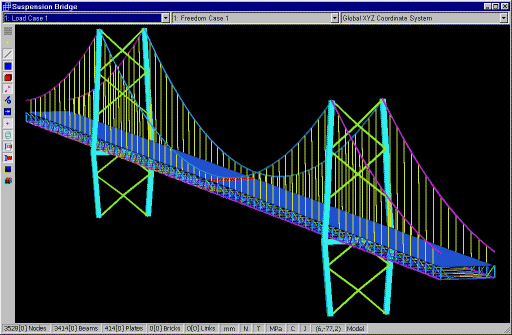
The tower of the ECS bridges is relatively low and the stiffness of the girder is large, compared with the normal cable-stayed bridges. presented a new type of combined cable-stayed bridge called the extradosed and intradosed cable-stayed bridge with continuous cables, which optimized the structure performance of ECS bridges. More and more ECS bridges were constructed in Korea, India, Hungary, Thailand ), Slovenia, America, etc., due to the consideration of aesthetic configurations with lower towers and the reduction of cost. In the meantime, this type of structure was widely used. The concept was well received in Japan and more than 30 ECS bridges were constructed there. The concept, first proposed by the French engineer Jacques Mathivat in 1988 is based on the fact that the stay cables provide prestress for the girder and simultaneously share the vertical load. The extradosed cable-stayed (ECS) bridge is a relatively new composite structure consisting of stay cables, a tower, and a girder. More importantly, it helps the designers to enhance the efficiency in the stage of conceptual design. As a result, reasonable values of very important parameters are suggested, which helps the readers reach a better understanding of the mechanical behavior of AECS bridges. Then, a parametric study of AECS bridges is carried out by using the proposed equations directly, instead of using the traditional finite element modeling process, which requires a lot of modeling work.


The theoretical results obtained from the Ritz method are in good agreement with that from the finite element analysis, which shows the accuracy of this approach. The Ritz method is a simple and efficient way to solve composite structures, such as the AECS bridge, compared with the traditional force method, displacement method, or finite element method.

The work includes the analysis of the equivalent membrane tension of the cables, the ratio of side-span cable force to middle-span cable force, and the deflection of the main girder subject to uniformly distributed load. A practical method to analyze the mechanical behavior of the asymmetric extradosed cable-stayed (AECS) bridge is provided in this paper.


 0 kommentar(er)
0 kommentar(er)
